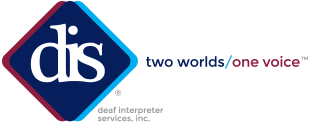National Deaf History Month, which began on March 13th and runs through April 15th, is a celebration of contributions of the hard-of-hearing and the Deaf community to American society. It’s a great time to recognize deaf champions, and increase awareness of the deaf community’s rich history.
Here’s a bit about the commemoration’s history, the story of how it came to be formalized and recognized in modern times, and a few fun ways it’s being celebrated:
Three Important Dates
Deaf History Month straddles two months to highlight three of the key milestones in deaf history:
March 13, 1988: The Deaf President Now movement succeeds in having I. King Jordan named the first deaf president of Gallaudet University. Dr. Jordan became known as a symbol of self-determination and empowerment for deaf and hard of hearing people around the world.

In 1988, the Deaf President Now movement succeeded in persuading Gallaudet to appoint its first deaf president in 124 years.
April 8, 1864: President Abraham Lincoln signs the charter of Gallaudet University in Washington, the first school for the advanced education of the Deaf and hard-of-hearing in the world.
April 15, 1817: The first permanent public school for the deaf, the American School for the Deaf in Hartford, Connecticut, opens.
Modern Recognition
Deaf History Month was originally envisioned as just one week. Two employees at the Martin Luther King, Jr. Memorial Library in Washington began teaching their colleagues sign language, and these initial lessons grew into Deaf Awareness Week, celebrated and recognized by library administration.
In 1996, the National Association of the Deaf (NAD) suggested the week become a full-fledged month, and in 1997, the first annual, nationwide National Deaf History Month was celebrated, March 13 – April 15.
In 2006, the American Library Association (ALA) and NAD announced that March 13 to April 15 is National Deaf History Month, thanks to the efforts of Alice Hagemeyer, a deaf American librarian who’s worked to make libraries more accessible to deaf people. NAD, with her guidance, has consistently encouraged state and local deaf-related organizations to collaborate with local libraries, state governors, county executives and mayors to recognize the month. Today, NAD publishes a Deaf Culture and History section on the ALA site. NAD continues to work with Hagemeyer and the ALA to ensure that there is a Proclamation of National Deaf History Month through the White House and/or the U.S. Congress.
Miscellaneous Tidbits
Here are some helpful and interesting resources to visit and take advantage of this month:
- Alice Hagemeyer bio on Wikipedia. Hagemeyer has spent her career improving library services to the Deaf community, both by encouraging deaf people to make better use of public-library resources, and enhancing awareness of Deaf history, language, and culture in the library community. A mentor and exemplar, she has inspired several other deaf people to choose library careers.
- This episode of the Emmy-winning TV series, Deaf Mosaic, filmed in 1988, is devoted entirely to the Deaf President Now movement.
- Famous Deaf People: Educators, movies & television stars, performers, sports stars, media personalities, and even famous deaf people in organizations (did you know that Juliette Low, the founder of the Girl Scouts, was deaf?)
- YouTube Spotlight: Celebrating Deaf History Month
- The Arizona Commission for the Deaf and Hard of Hearing offers a weekly guide during Deaf History Month. Did you know that Martha’s Vineyard was once a Deaf Utopia? See this link to Deaf Awareness: Week Two.
Ohio State Senator Bill Beagle is proposing a state bill this year that will help Ohioans better recognize and honor deaf people on a state level. His tribute to the Deaf provides a good closing note for this blog:
The history of deaf culture offers lessons beneficial to all. In deaf culture, one who is engaging in conversation is rarely interrupted by another until they give a visual indicator that they are finished with their remarks. This is the essence of productive conversation and a missing element to the incendiary dialogue of today. What’s more, the adaptivity and technological advances being made in deaf culture are especially noteworthy – this language and culture adapts to our changing world with just the same efficiency as any other, regardless of the obstacles that it faces in absence of spoken word.
Deaf individuals rely on vision as the most important sensory faculty used in communication. Facial expressions are a crucial facet of all sign languages, American or otherwise. This attests to perhaps the most noble strength about the community – human connection is most authentically seen, not heard.
This month is a great time to learn, honor, appreciate and reflect.

